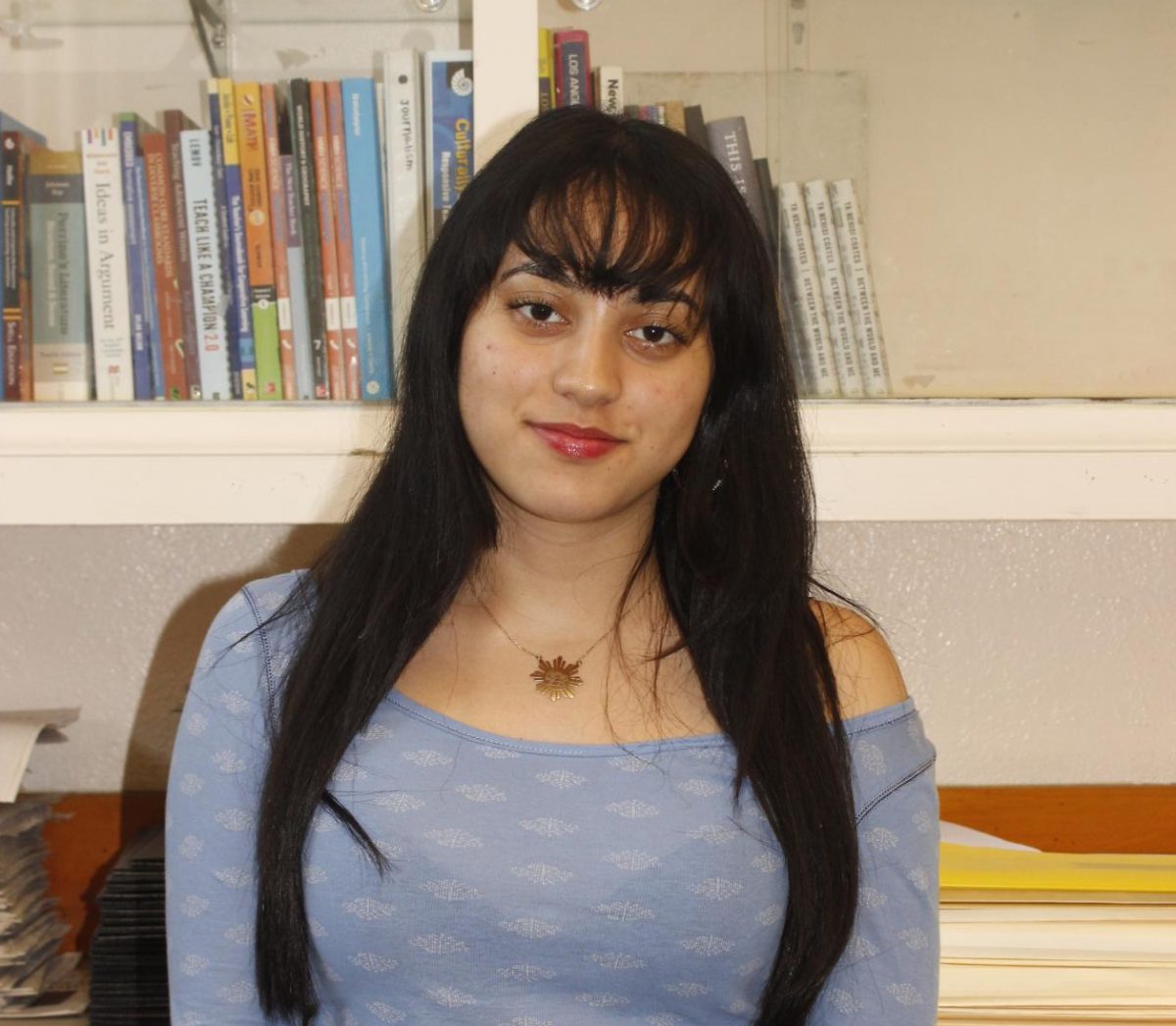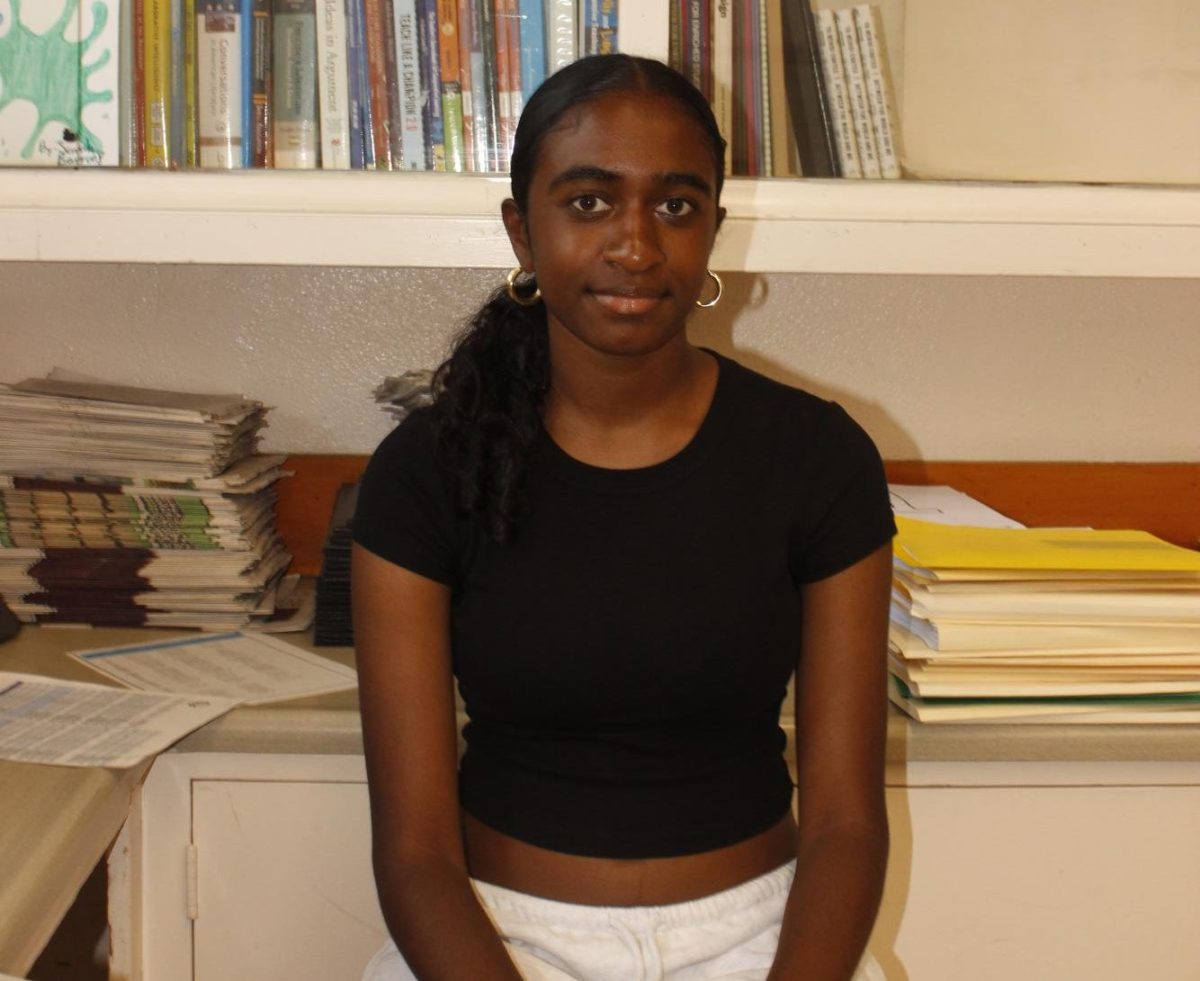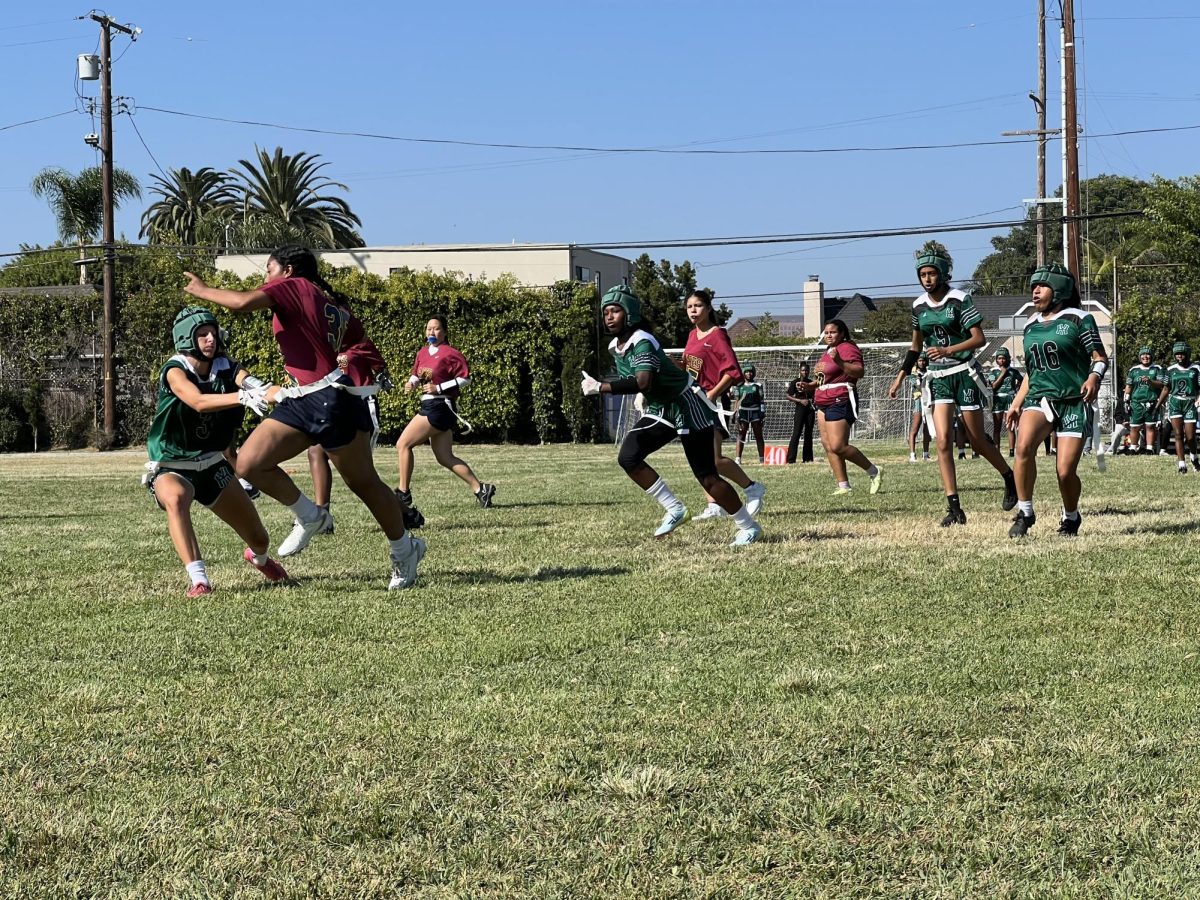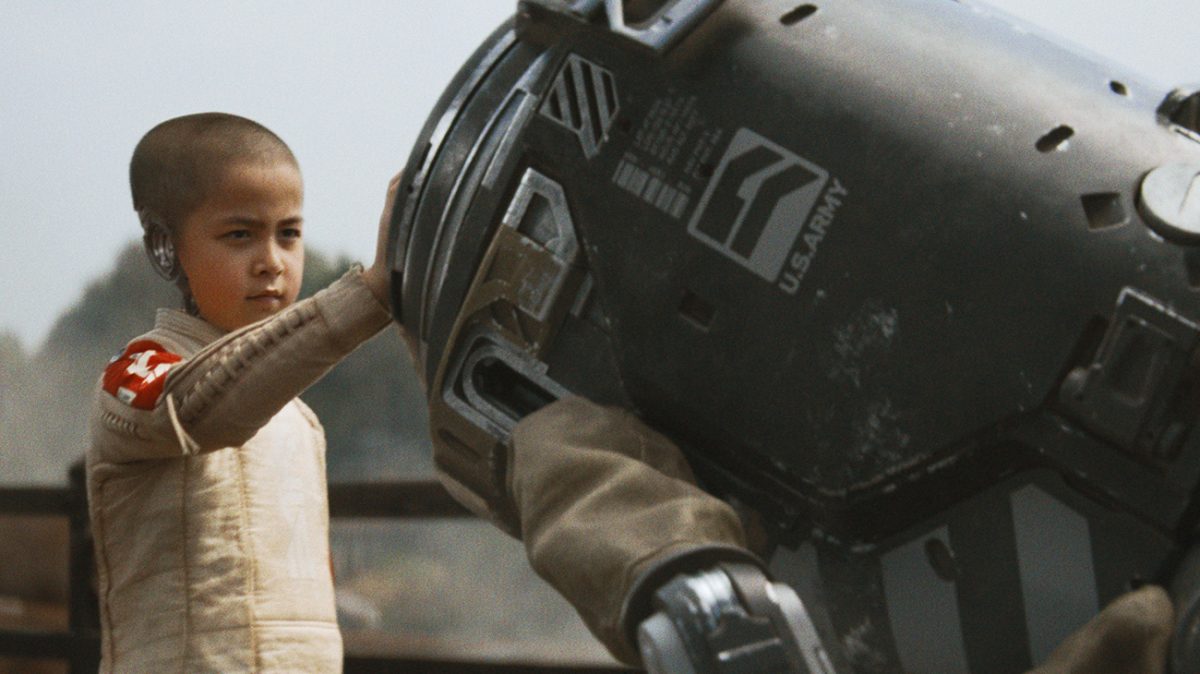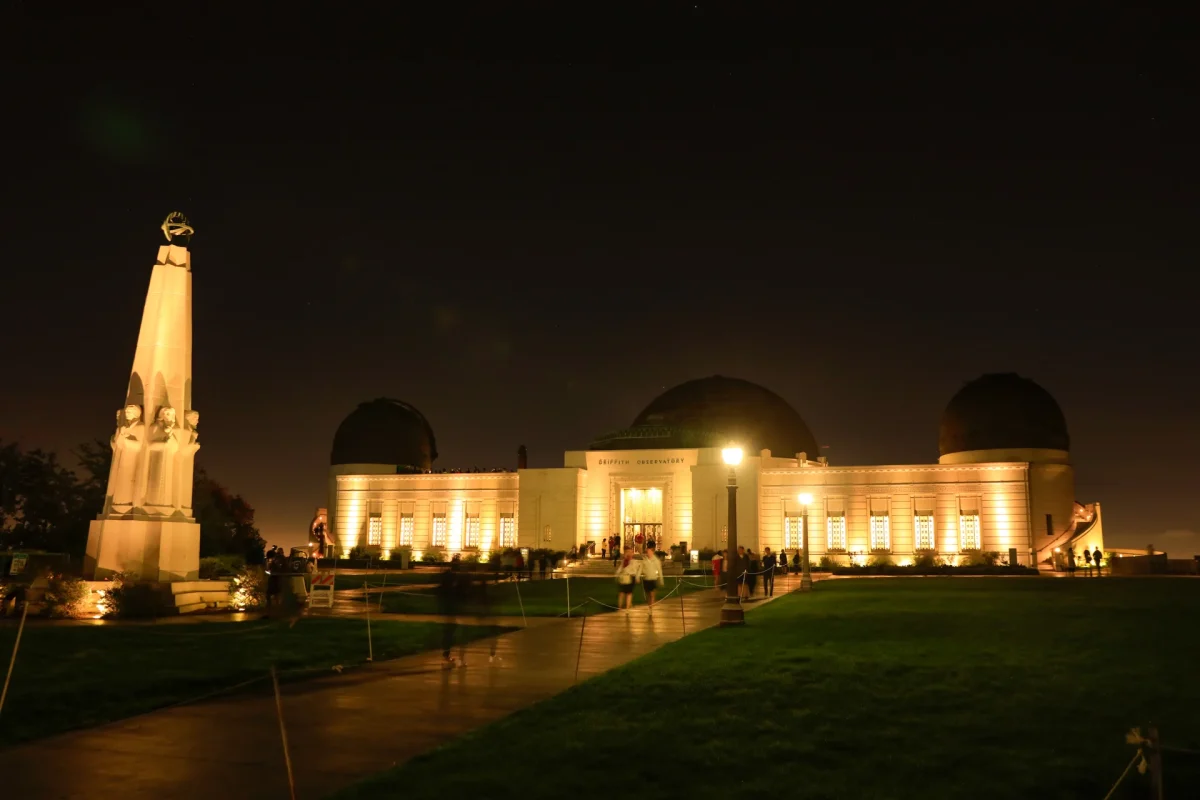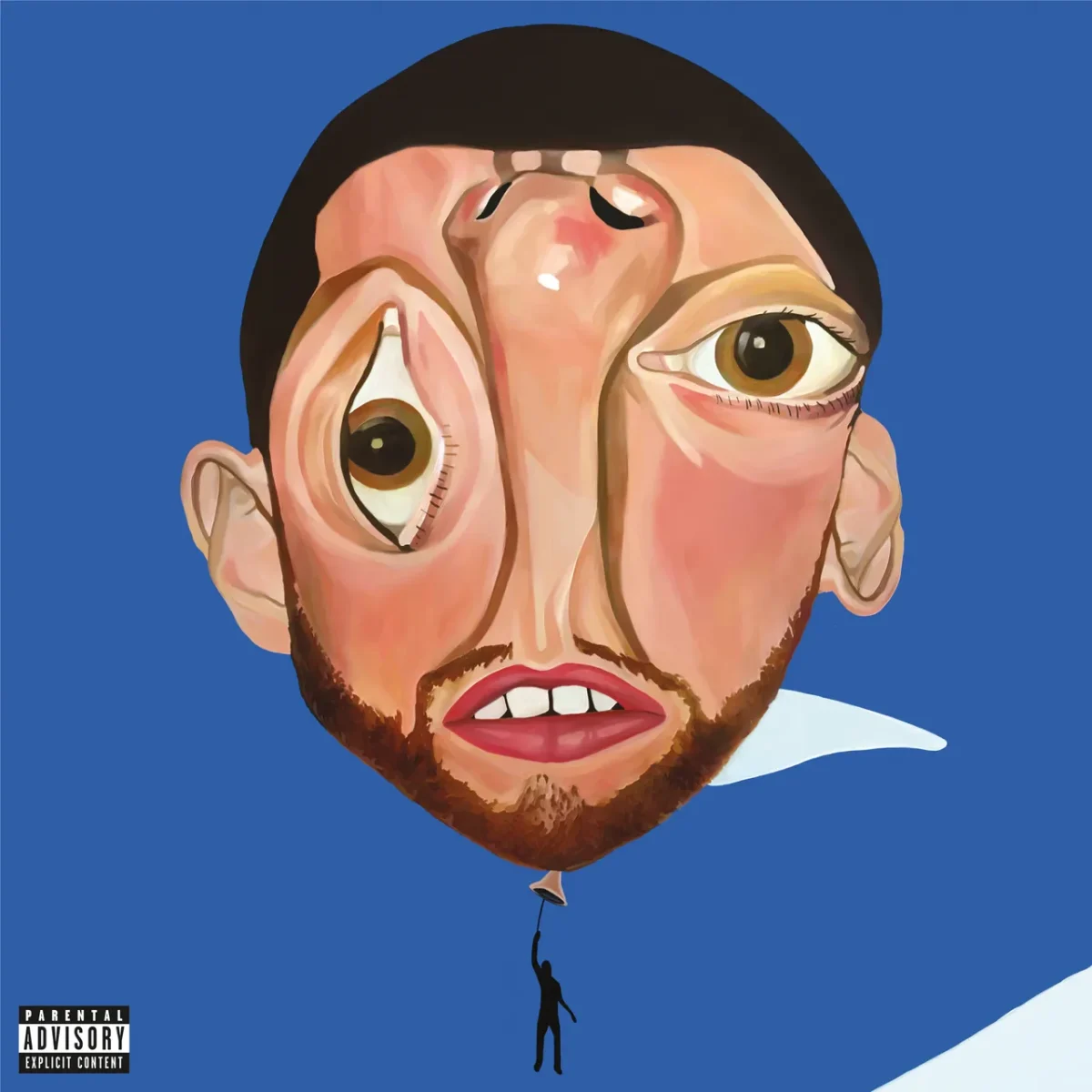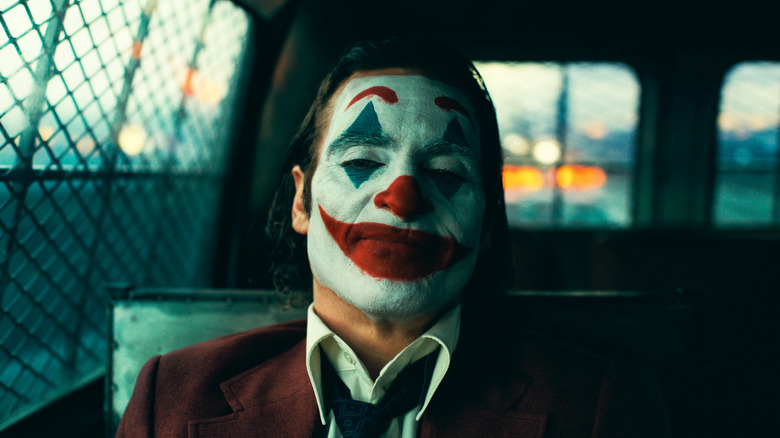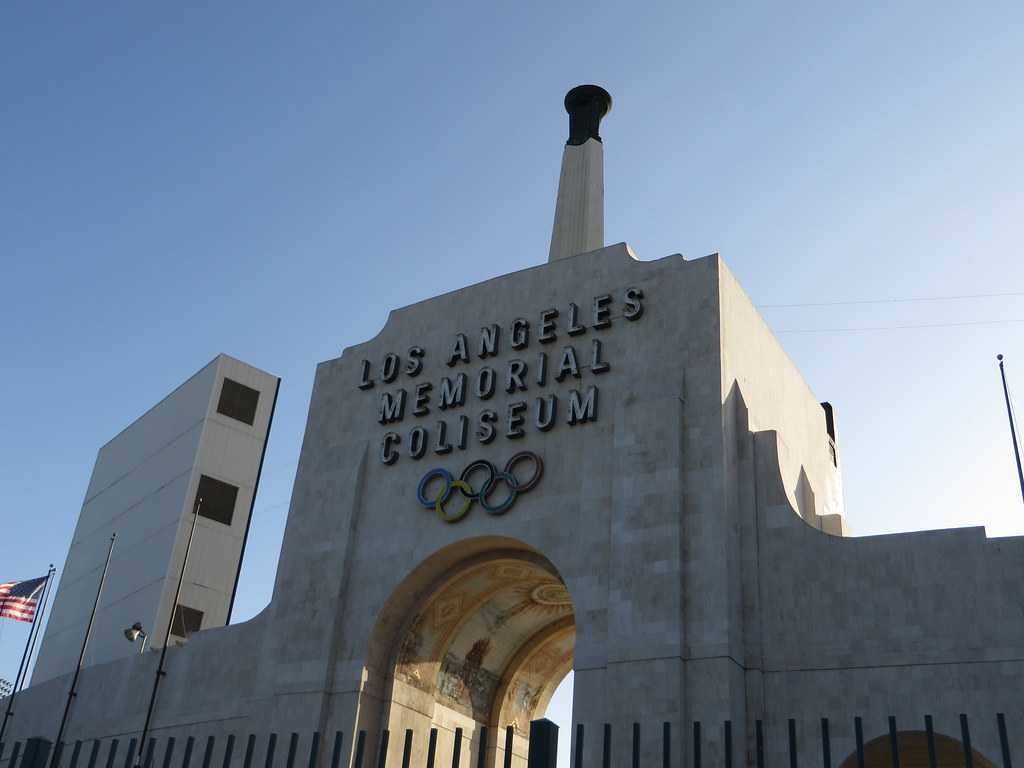In a turbulent time when anti-AI protesters line the streets of studio lots, the film “The Creator” arrives with an AI-integrated cyberpunk dystopia and questionable Asian representation.
The film depicts a future where AI was once an integral companion to human civilization. After the nuclear bombing of Los Angeles by overrun AI, the West has waged a war on the Republic of New Asia that harbors the AI’s creator. Joshua, a US military operative, seeks to destroy a rumored ultimate weapon that would turn the tides of the war.
With the heavy influence of 1980s Japanese urban culture on the cyberpunk movement, it’s no surprise that “The Creator” incorporates Japanese culture. This choice manifests most clearly in the title cards introducing each “act” of the film (“The Child,” “The Mother,” etc.) with giant corresponding Japanese/Chinese characters in the background. Rarely do these serve an actual narrative purpose; they’re only employed for the “aesthetic.” Their inspiration from “Everything Everywhere All At Once” (2022) is clear — the acclaimed A24 film featured similar Chinese title cards. However, it never feels as genuine, perhaps because “EEAAO” primarily focuses on the Chinese-American experience, whereas “The Creator” is intent on achieving a pan-Asiatic amalgamation.
This trend continues with Japanese actor Ken Watanabe’s role. His character, the leader of the AI forces, speaks fluent Japanese as a crutch for the screenwriters’ storytelling. Although there are moments where the emotional impact of his lines benefits from the language switch, it rarely feels intentional. Directing ethnically Asian actors/characters to sporadically speak non-English languages is not a measure of diversity.
If “The Creator” lumps all Asian countries into this “New Asia” republic, it’s responsible to touch upon the meshing of these diverse cultures. Instead, it portrays characters chattering in a multitude of languages with mutual comprehension despite the lack of the translator device otherwise used throughout the story. Granted, the screenwriters were limited by the runtime restrictions of film as a medium. The director has stated that the original cut was over 5 hours long; the extra footage might’ve contained the world-building sequences lacking in the final product.
As an aside, the war sequences in what looks like Southeast Asia remind the audience of guerilla warfare and habitat destruction in the Vietnam War, even for audiences as young as teenagers. The film’s premise — the US and the West changing the status quo in Southeast Asia through a bitter conflict — also parallels the US involvement in the war. Onscreen characters doubt AI’s role in the Los Angeles nuke, which would undermine the US’s justification for the war. Perhaps the film calls into question the necessity of US intervention in foreign affairs.
Of course, the film has plenty of positive attributes. The most complex character to grace the screen, Alphie is the pinnacle of AI development in the form of a young girl. Her tears are surprisingly wrenching amongst a sea of seasoned Hollywood actors such as John David Washington and Gemma Chan. Aside from Madeleine Yuna Voyles’ legitimate performance skills, perhaps the digital generation audience has grown accustomed to seeing AI as only a tool from the proliferation of large language model services. However, in “The Creator,” AI has become something more.
“It’s not real,” the humans tell themselves as they destroy artificially intelligent “simulants” and hear their robotic death throes. Humanity overachieved in building emotionally available companions; the simulants are just as — if not more — empathetic as the humans. They redefine what it means to be human; although they cannot reproduce, they take in human orphans to raise as their own. The simulants love, cry, protect, and — most of all — want their freedom.
The VFX department’s technical accomplishments also deserve praise. The simulants’ unique look is well-crafted, with machinery whirring in an empty hole in their heads. The character design is simple and never feels tacky, constantly reminding both the human characters and the audience that the simulants’ emotions are not “real” in a traditional human sense. (or are they?)
The film’s orchestral score is composed by Hans Zimmer, a legend in his field. Disappointingly, it is far from his other iconic works that have proven to be triumphs in the genre, like “Interstellar,” “The Dark Knight,” and “Inception.” The hope is that Zimmer is too busy scoring “Dune: Part Two” (2024), which would support his previous comments. Upon reading Frank Herbert’s “Dune” as a young boy, Zimmer never watched David Lynch’s 1984 adaptation to preserve his artistic vision for the film’s soundscape.
“The Creator” releases in theaters as writers and actors march for protection against artificial intelligence in their ever-competitive job market. As production finished in May 2022, almost a year before the 2023 protests even began, it’s unlikely the filmmakers had this context in mind. This emerging genre of pan-Asian dystopian cyberpunk is enjoyable and successful, as evidenced by Paolo Bacigalupi’s “The Windup Girl.” However, one wishes for American filmmakers to approach the subject with more room to explore what the region’s rich cultural heritage has to offer.
KAMI: What do you want, sweetie?
ALPHIE: For robots to be free.
KAMI: Oh. We don’t have that in the fridge. How about ice cream?




